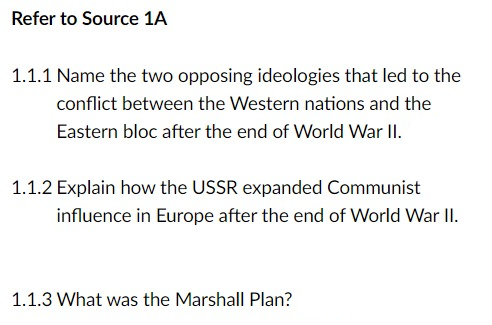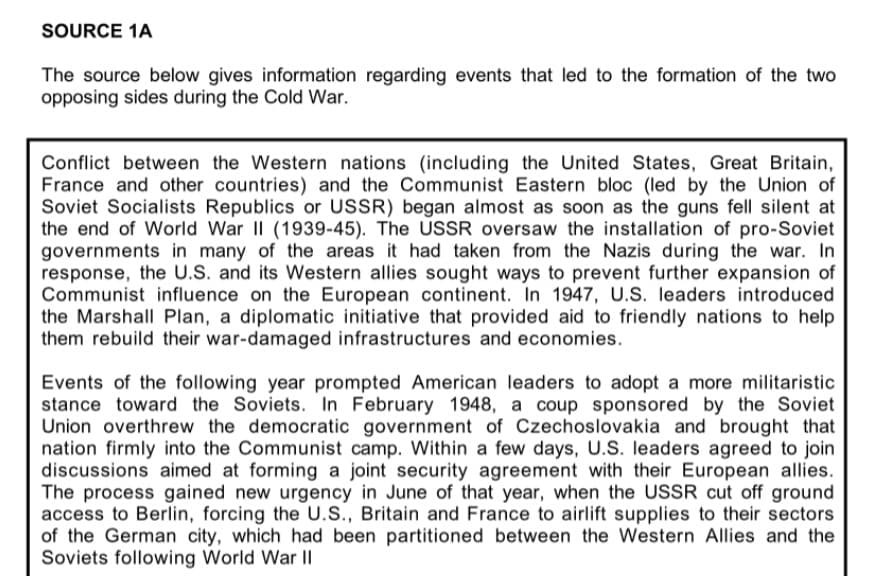1.1.1 Name the two opposing ideologies that led to the conflict between the Western nations and the Eastern bloc after the end of World War II. 1.1.2 Explain how the USSR expanded Communist influence in Europe after the end of World War II. 1.1.3 What was the Marshall Plan?
1.1.1 Name the two opposing ideologies that led to the conflict between the Western nations and the Eastern bloc after the end of World War II. 1.1.2 Explain how the USSR expanded Communist influence in Europe after the end of World War II. 1.1.3 What was the Marshall Plan?
Related questions
Question

Transcribed Image Text:Refer to Source 1A
1.1.1 Name the two opposing ideologies that led to the
conflict between the Western nations and the
Eastern bloc after the end of World War II.
1.1.2 Explain how the USSR expanded Communist
influence in Europe after the end of World War II.
1.1.3 What was the Marshall Plan?

Transcribed Image Text:SOURCE 1A
The source below gives information regarding events that led to the formation of the two
opposing sides during the Cold War.
Conflict between the Western nations (including the United States, Great Britain,
France and other countries) and the Communist Eastern bloc (led by the Union of
Soviet Socialists Republics or USSR) began almost as soon as the guns fell silent at
the end of World War II (1939-45). The USSR oversaw the installation of pro-Soviet
governments in many of the areas it had taken from the Nazis during the war. In
response, the U.S. and its Western allies sought ways to prevent further expansion of
Communist influence on the European continent. In 1947, U.S. leaders introduced
the Marshall Plan, a diplomatic initiative that provided aid to friendly nations to help
them rebuild their war-damaged infrastructures and economies.
Events of the following year prompted American leaders to adopt a more militaristic
stance toward the Soviets. In February 1948, a coup sponsored by the Soviet
Union overthrew the democratic government of Czechoslovakia and brought that
nation firmly into the Communist camp. Within a few days, U.S. leaders agreed to join
discussions aimed at forming a joint security agreement with their European allies.
The process gained new urgency in June of that year, when the USSR cut off ground
access to Berlin, forcing the U.S., Britain and France to airlift supplies to their sectors
of the German city, which had been partitioned between the Western Allies and the
Soviets following World War II
Expert Solution
This question has been solved!
Explore an expertly crafted, step-by-step solution for a thorough understanding of key concepts.
Step by step
Solved in 4 steps
